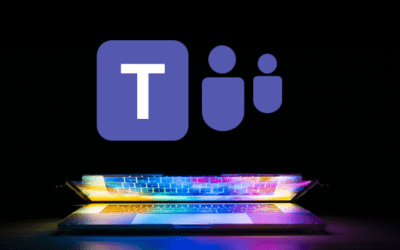Success Factors for Remote Teams
by Avantix Learning Team | Updated March 26, 2020
Remote workers and teams are growing at an exponential rate with the advent of new technology and, recently, because of social distancing. Check out these strategies to keep these teams focused, productive and motivated.
1. Communicate regularly and in different ways
For remote workers, video calls or conferencing is usually the most important type of communication. Because this type of communication engages both audio and video (auditory and visual senses), it can enhance understanding and empathy. It also enables team members to read visual cues and has a humanizing effect. After video, communication methods are phone / audio, chat and then email (in that order). The type of communication you choose also depends on the purpose of the interaction. Sometimes, an email may be a better choice if you need to summarize a lot of information.
2. Select reliable video conferencing software
Reliable and easy to use video conferencing software is essential for remote teams. You can use free or paid tools including Skype, Zoom, Microsoft Teams, Google Hangouts, Adobe Connect and Gotomeeting (to name a few).
3. Schedule regular meetings with clearly defined goals
It's important to schedule regular meetings with your remote team. These could be daily, weekly or biweekly but should be consistent. Try to meet at least once a week. If meetings are infrequent, you'll lose touch and miss information and dealing with problems early on. Meetings should have clear, identifiable goals that team members need to meet. Set up KPIs (key performance indicators) that need to be met. Have each team member report on where they are in their KPIs, what they have completed in the last week, what they are planning to do next week and what issues they are encountering so they can get help.
4. Allow flexible working time
Allow remote workers to have flexibility in working time as long the focus in on efficiency and deliverables. Create flexible work agreements with some consistency like working the same hours each day (this is critical to ensure sleeping and eating habits are consistent which contributes to long-term success). Also, all team members must show up for team meetings on a specific day and time and report on what they have done and what they plan on doing. Flexible schedules work well as long as the worker is productive and provides good results. Keep in mind that schedules may need to be adjusted based on other team members if they are in different time zones.
5. Make use of time tracking tools (if appropriate)
You can track work hours, attendance and other measures of productivity for remote workers using time tracking software such as Time Doctor. Consider whether this type of tracking is appropriate for the job. Time tracking software can help measure how effective a worker is doing a particular task.
6. Invest in technology that facilitates collaboration
It's essential for remote teams to be able to collaborate seamlessly on documents, worksheets, presentations, media and projects. This could be on a shared server or in the cloud. Popular online tools include Microsoft online and Google apps. If team members can work on shared files, each person can add, remove and delete content and you can track changes as well. Ensuring remote teams are equipped with reliable and secure software and hardware is key to collaboration and effective remote work. Invest in technology that will help your remote team be productive and engaged.
7. Facilitate informal communication
Because your team is remote, you're likely missing out on live, informal communication and the sharing of ideas and insights that occurs when team members run into each other at the office. To compensate for the lack of live, informal communication, set up a chat room (virtual water cooler) in your chosen software and ensure it's always open. You can create this chat room in Skype, Slack and similar programs. In this room, your team members can talk about anything they want (personal or business related). When people are engaged in small talk, they get to know each other and often chat about ideas and insights into both business and people.
8. Watch out for email and chat overload
It's easy for remote teams to be overloaded with email and chats since they normally receive more of this type of communication than staff in a traditional office setting. This overload can have a negative effect on the happiness and productivity of remote workers. To combat this, encourage your staff to turn off chat and email at the end of their work day and to balance chat and email with audio and video calls.
9. Set up and use a project management system
Set up a project management system and make team members use it. All team members need to make sure that what they do is documented so you can communicate effectively to rest of the team and to clients. Project management tools include Asana, Base Camp and Trello.
10. Document processes or systems
For common jobs or tasks, document the processes or create systems so that remote workers don't have to start from scratch each time. Create checklists so that tasks are completed consistently and to an acceptable quality level.
11. Arrange periodic face-to-face meetings
Remote team members need to meet face-to-face at some point. Arrange retreats of large meetings quarterly or twice per year and smaller live meetings throughout the year. When people meet in person, they will learn more about their team and will learn nonverbal cues and extra details that are difficult to pick up in a remote setting.
These strategies should help keep your remote teams energized, productive and on track.
Subscribe to get more articles like this one
Did you find this article helpful? If you would like to receive new articles, join our email list.
If you want to learn a new skill, you may be interested in the following courses
Microsoft Excel: Intermediate / Advanced
Microsoft Word: Intermediate / Advanced
Microsoft PowerPoint: Intermediate / Advanced
Microsoft Excel: Introduction to Visual Basic for Applications (VBA)
Our instructor-led classroom training courses are delivered at our downtown Toronto location at 1 Yonge Street, Suite 1801 (Toronto Star Building), Toronto, Ontario, Canada (some courses may also be delivered at an alternate downtown Toronto location). Contact us if you'd like to arrange custom training at your office on a date that's convenient for you.
To request this page in an alternate format, contact us.
Copyright 2024 Avantix® Learning
You may also like
Zoom Keyboard Shortcuts (50+ Shortcuts to Save Time During Your Virtual Meetings, Training and Webinars)
As a tool for virtual calls, meetings and webinars, Zoom has exploded recently with a huge group of users transitioning to working remotely. We've put together a complete list of keyboard shortcuts for both Windows and Mac users to help you work for effectively with Zoom.
Microsoft Teams Keyboard Shortcuts (40+ Shortcuts)
If you're a Microsoft Teams user, you can save alot of time using your keyboard to access Teams commands. Check out this essential list of keyboard shortcuts for Microsoft Teams for Windows users (Desktop).
Training Methods for the Virtual Classroom (12 Popular Strategies and Tools)
Training methods that are used in a virtual classroom need to support learning objects and should also be engaging, appropriate for the type of training and the virtual space, viable and cost-effective. Many training methods can be used both in a live classroom and in a virtual one …
Microsoft, the Microsoft logo, Microsoft Office and related Microsoft applications and logos are registered trademarks of Microsoft Corporation in Canada, US and other countries. All other trademarks are the property of the registered owners.
Avantix Learning | 1 Yonge Street, Suite 1801 (Toronto Star Building), Toronto, Ontario, Canada M5E 1W7 | info@avantixlearning.ca







